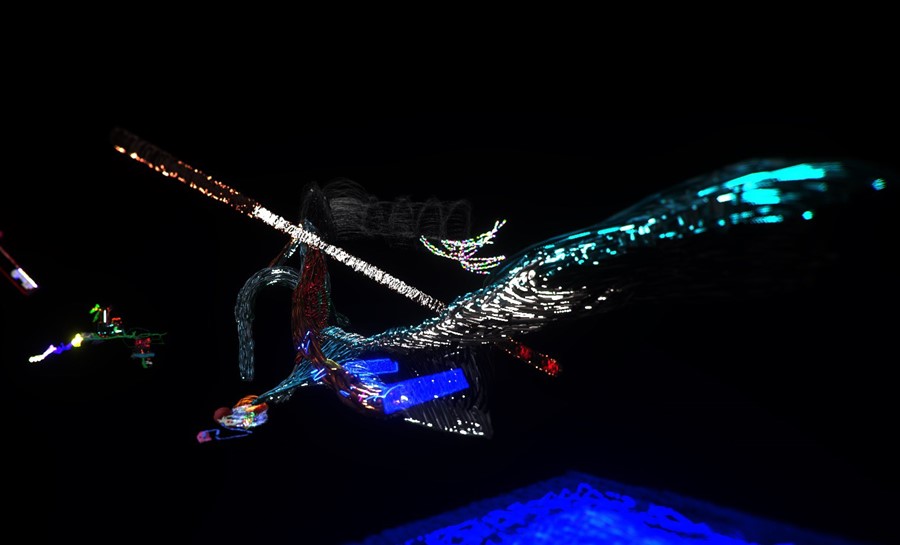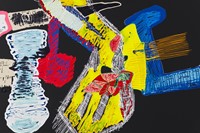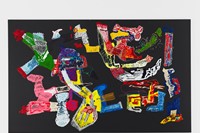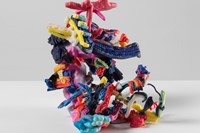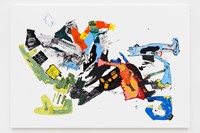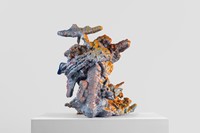Fresh out of Hollywood, Leelee Kimmel is very happy to be making work. We spoke to her at her remarkable new London exhibition
New York-based artist Leelee Kimmel has a knack with confounding expectations: her conversations whip into wild, yet charming tangents. You half expect to hear one thing, then she jolts right into something else. Something seemingly profound becomes hilarious; a discussion of her artistic influences is rounded off with a punchline about her former parrot, Picasso, and dog named Nina Simone, who both came to tragic ends. “I personally don’t have a sense of time or space in the real world,” she reveals, then dovetailing from what feels like a weighty revelation into a joke about her crashing into sliding doors “like a mosquito on a window”.
Kimmel’s world is very much her own – a heady mix of daftness and profundity – and a space that’s potentially fascinating, yet disorientating for those unfamiliar with it. Such are the worlds she builds in her paintings, too, and which expand beyond the canvas into gloriously gelatinous sculptures and a pioneering VR piece. These works are currently on show in an exhibition entitled Wormhole at London’s Simon Lee gallery, Kimmel’s first in the UK and the follow-up to her solo gallery debut in Brooklyn earlier this year. Many heralded this as her “reinvention” – under her maiden name, Leelee Sobieski, the artist is better known as an actor who landed a role in Stanley Kubrick’s Eyes Wide Shut before she’d even turned 14. She officially left the silver screen behind in 2012, focusing on family and painting, though art is hardly a new whim for Kimmel. “I’ve been doing this for my whole life, pretty much,” she says. “I always acted to be able to afford paints. It might sound really weird, but that’s what happened – the cards were just dealt to me that way. But acting was never my passion, unless I was working with someone really interesting and smart.” Here, we discuss space, freedom, and the “gross” sides of Hollywood.
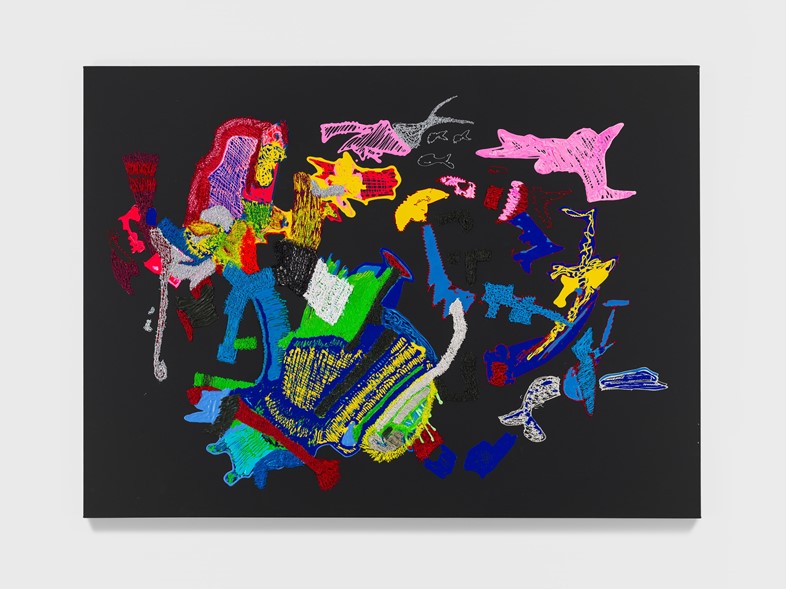
On the themes in her work…
“I feel like there’s a lot of spying and weapons and radiation that appear in my work, lot’s of electricity and energy... there’s something kind of frantic or obsessive and also a drive for freedom at the same time. You can’t show the light unless there’s a little bit of darkness.”
On finding her own space through art and VR...
“I have no sense of space in real life, and I think my paintings and the sculptures and the VR help me ground myself. Some people get nauseous in VR or feel uncomfortable after a while as there’s no top and bottom or left and right – it’s in infinity – so when I put it on I realised, ‘this is how I see!’ I felt so comfortable I wanted to stay in there, I love reality and I don’t want to leave it, but I feel really safe in VR.
“It’s like a portal into another world. It’s very easy to bring things into ‘sci-fi’ recognisable alien forms, or images that connect you with this world, and ideally I wanted to make a wormhole into a truly alien landscape – the landscape in my head, which is in my painting too.”
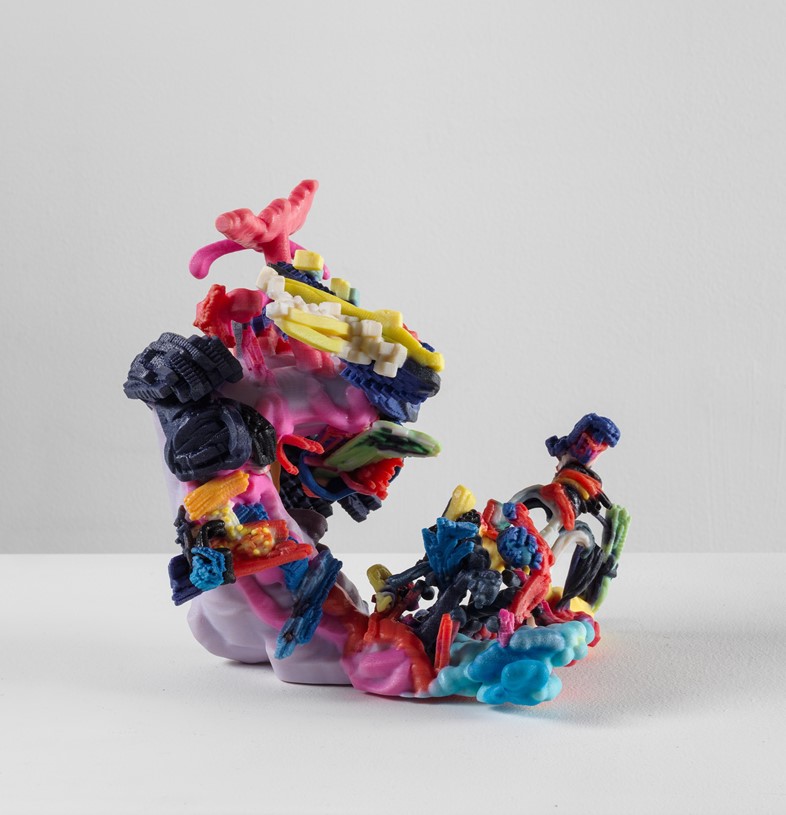
On the emotional rollercoaster of art-making...
“I know what I’m doing when I’m doing it but I almost don’t know what I’m doing when I’m doing it. I literally get completely lost and then there’s obviously certain things that are really purposeful, but there’s a lot of room for accidents and errors when you’re controlling liquids. I feel like I’m always attacking myself, or having conversations with myself about whatever news is going on that week, or what stories I’m told, or what’s going on in my life, or my friends’ lives... I’m a 21st-century sponge absorbing it all – even if it didn’t happen to me, it comes out of me from two different sides, jumping into someone else’s shoes and back out. In a similar way, it feels like my canvases, VR and sculptures have a micro and macro element. I like that sort of push and pull.”
On leaving acting...
“A lot of the time when you work, it’s a money project basically. I started paying the rent on our house when I was 15, so I had a lot of pressure and things got complicated for me… So when I could, I stopped. It’s kind of a gross industry – well, they all are, when you examine them – but in acting you’re selling your appearance so much. I would cry every time I had to kiss somebody; I couldn’t stomach it. I would think ‘I like this person, so I don’t think they should pay me to kiss them,’ or ‘I don’t like this person, so I don’t want to kiss them’. Why is my kiss for sale?’ It made me feel really cheap.
“It didn’t matter whether people thought it was an admirable thing to do – in my soul I thought ‘my kiss is not for sale’ – it might have been acting, but it was real for me as it was my first or third kiss, so it was confusing for me. I don’t know why it’s legal for a child to act unless they can sell oranges or whatever legally too. It’s a crazy double standard and that’s super weird for me. Now that the MeToo movement has come forward, people understand more that it’s pretty gross and uncomfortable.”
Leelee Kimmel: Wormhole runs until August 30, 2018, at Simon Lee Gallery, London.
